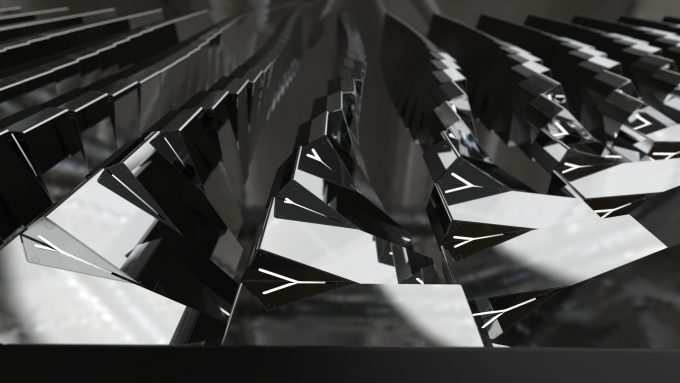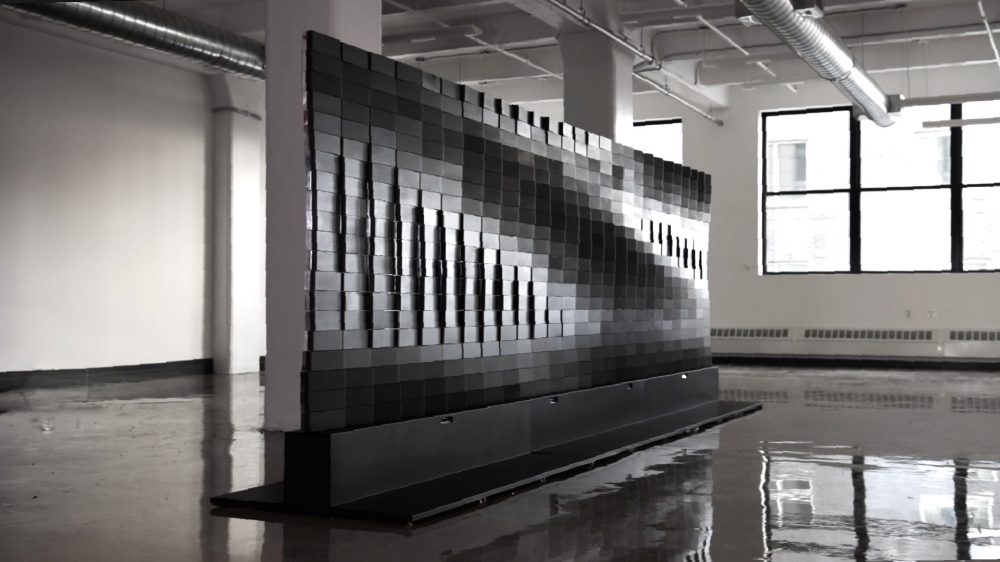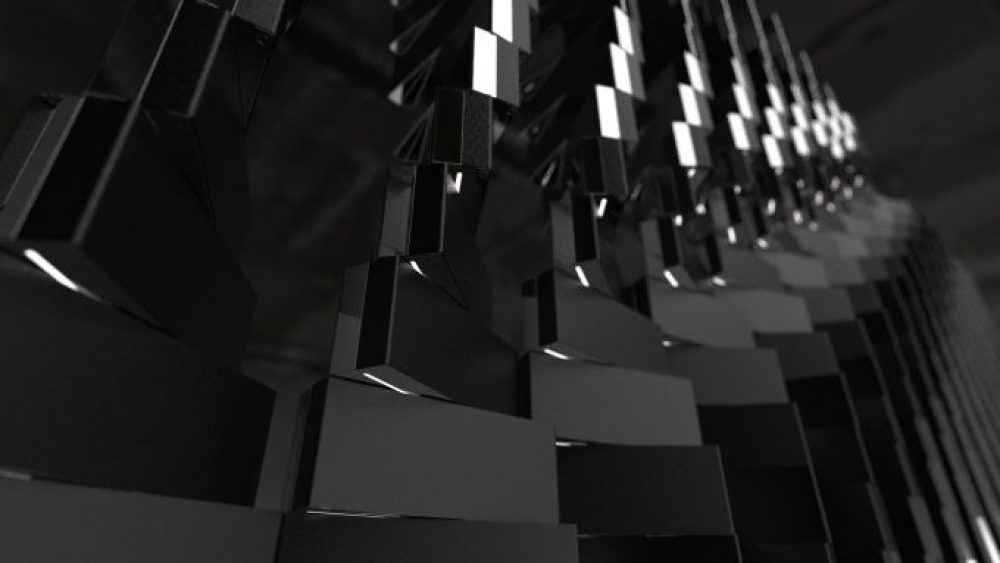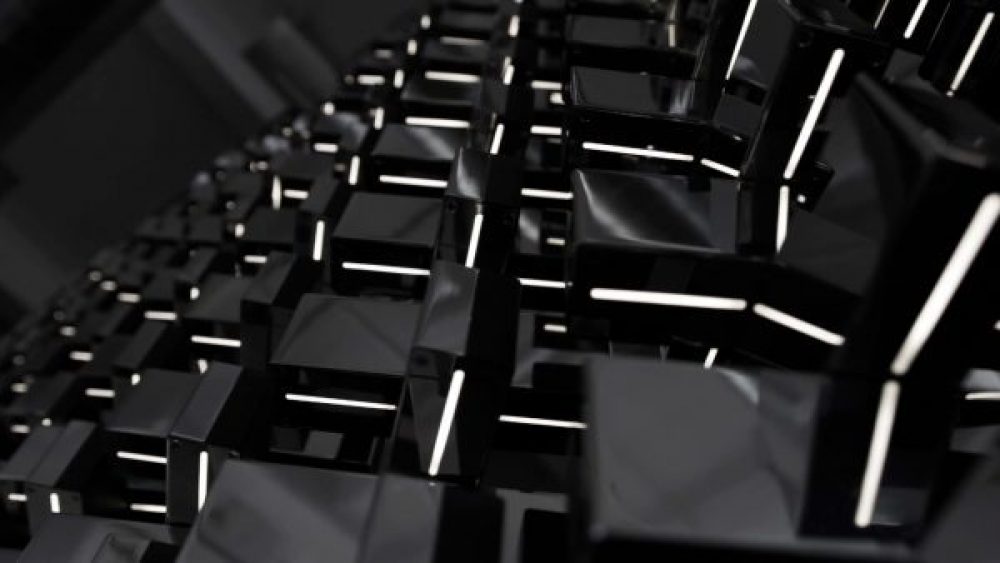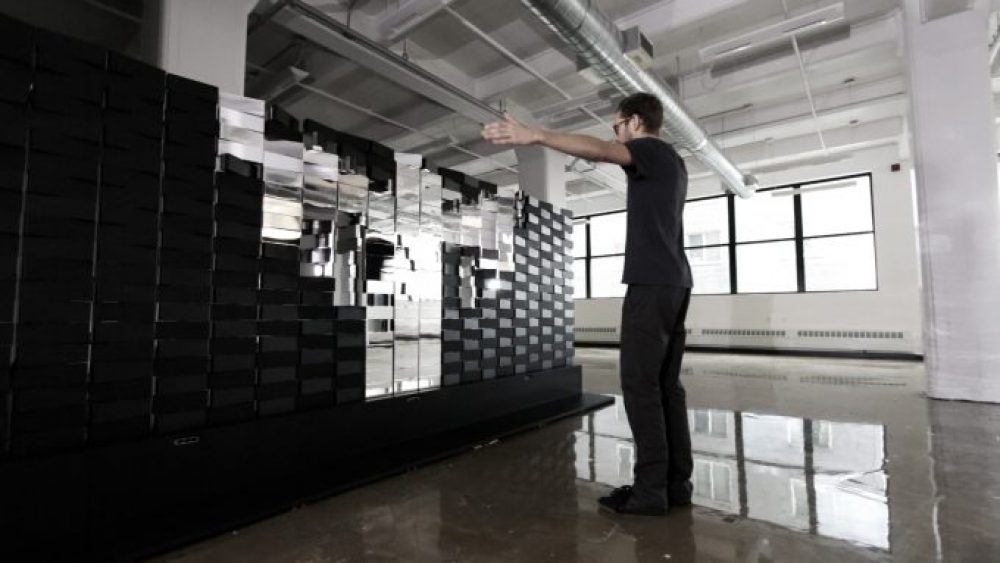New York–based multi-disciplinary studio, BREAKFAST, has unveiled a groundbreaking kinetic facade product dubbed “Brixels.” The use of kinetic panels for facade and interior design has rapidly grown in popularity both domestically and abroad recently, animating visuals and opening new paths for natural ventilation.
Each display is composed of an array of brick-sized pieces that are fully customizable in terms of massing, material, and finish. Through a central cavity, each individual piece is latched onto a central support shaft, which allows the objects to rotate in either direction.
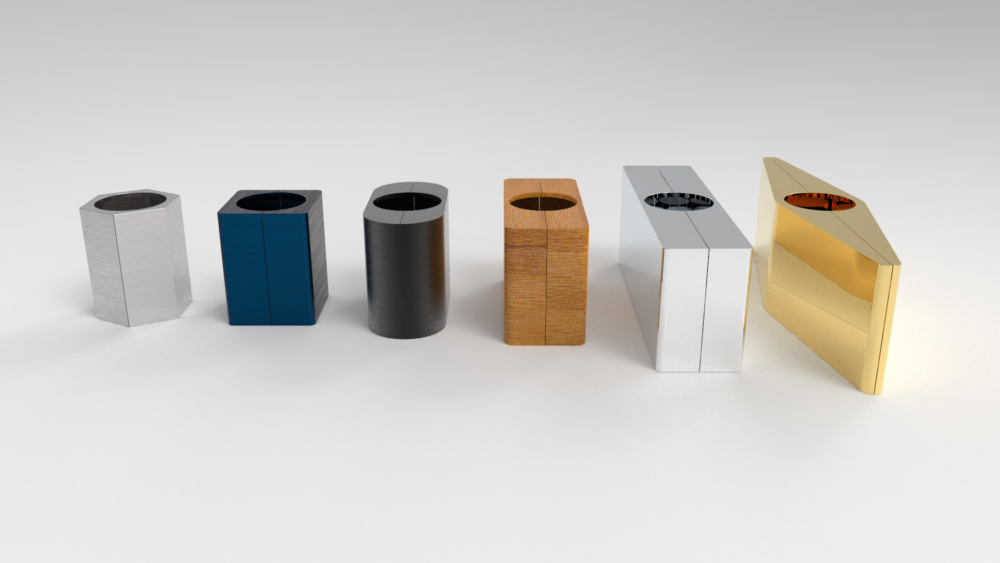
At the base of each central support shaft, BREAKFAST has inserted a series of printed circuit boards that are in turn connected to a Linux control computer. Through visual sensors, the installations can track and respond to adjacent physical movement or can be controlled directly through a web-based application. The multidisciplinary studio tested out their new technology with the 19-foot wide by 6-foot tall installation dubbed Brixel Mirror. Made of polished aluminum and matte-black steel, the pieces are capable of achieving 60 rpm via an app or one-on-one control.
While Brixel Mirror is the most significant application of the technology-embedded material to date, Andrew Zolty, BREAKFAST’s co-founder and head of design, has big ambitions for the product. According to Zolty, the customizability of the interactive blocks allows them “to become part of the space, rather than an add-on, used to outfit or become interior walls, room dividers, fences, railings, or even building facades.” Brixels have been tested to withstand the elements outdoors; a building can be entirely clad in sprawling, perpetually moving paneling.
